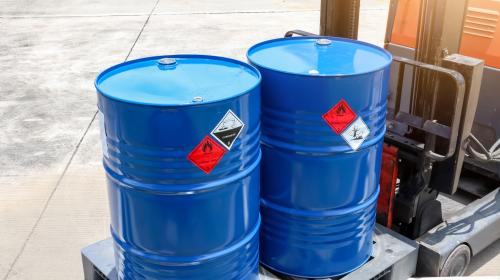According to the Environmental Protection Agency, around 6,600 facilities across the U.S. generate hazardous waste, with over 262 million tons of municipal solid waste reported in 2015. As the amount of waste Americans produce increases each year, recycling industrial hazardous waste is becoming a more important priority and popular option for businesses. There have been significant improvements in recent years in hazardous waste minimization, recycling and reuse options - like those the experts offer at Enviro-Safe Resource Recovery - for small, medium and large businesses. Before addressing what hazardous waste recycling is and how it works, let’s address the benefits businesses stand to gain for participating in hazardous waste recycling programs.
Why is recycling hazardous waste good for business?
In addition to protecting the environment, avoiding landfill overuse, reducing emissions and reducing the consumption of raw materials, recycling your hazardous waste also just makes good business sense by:
- Protecting human health and public safety (both your employees’ health and the general population)
- Minimizing your legal risk and liability by complying with federal and state regulations
- Helping you avoid fines and protecting your bottom line
- Reducing cost of purchasing new raw materials
- In some cases, helping you avoid RCRA regulations altogether by eliminating hazardous waste generation
- Maintaining your good professional reputation and distinguishing yourself from competitors by creating goodwill with shareholders as a “green” business
Businesses are getting on board and reaping the benefits of recycling; in 2017, the EPA reported over 1.5 million tons of hazardous wastes were managed by recycling.
What is hazardous waste recycling?
Hazardous secondary material can be recycled in several ways. It can be regenerated, or reclaimed, and processed to recover usable products. For example, solvents, acetone or lead can be regenerated which results in cost savings from avoiding purchase of new raw materials. Other hazardous waste can be recycled when used in industrial processes to create products, such as when residues like water, oil, dirt, and paint residues — called still bottoms — are used as energy. Some materials can also function as substitutes for a commercial product, such as recycled materials being used in wastewater treatment. Hazardous waste can be recycled to create roads, fuel or fertilizer.
How can my business recycle hazardous material?
To get the most benefit from recycling the hazardous waste your company generates, consider consulting experts like those at Enviro-Safe Resource Recovery. Our experts can ensure you avoid “sham recycling” pitfalls like recycling a secondary material that is ineffective for its claimed use. We work with our clients to maximize their cost savings while establishing sustainable recycling practices. With our long history of leadership in resource recovery, we have access to reliable markets for the products made from recycling your hazardous secondary material. From providing waste characterization, sampling, and transport to working with you on waste minimization strategies, our team works closely with you throughout the entire process. Learn more about how your business can benefit from working with our experts.



